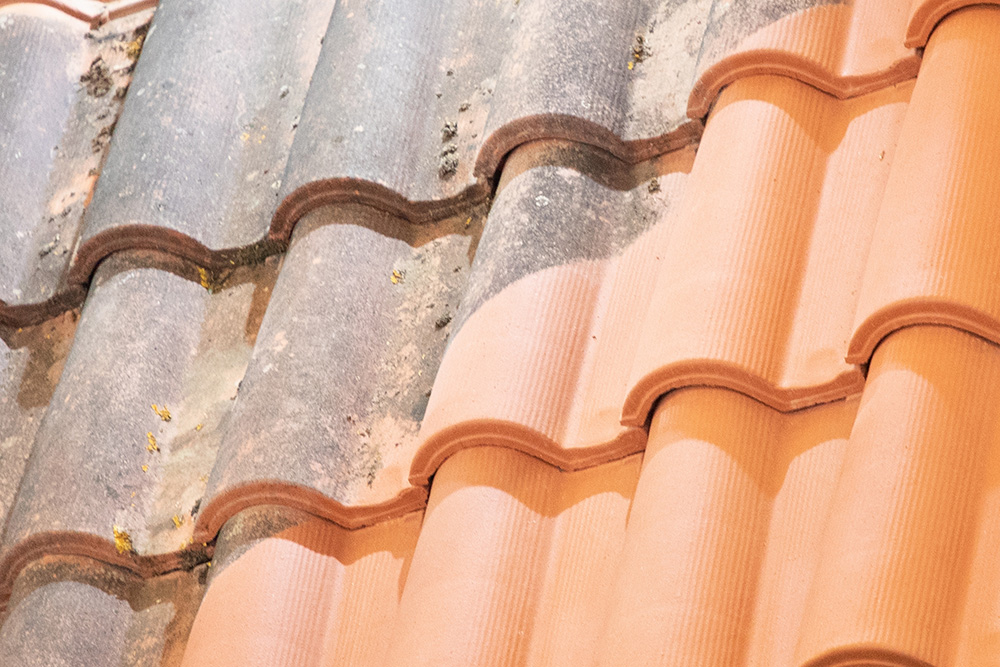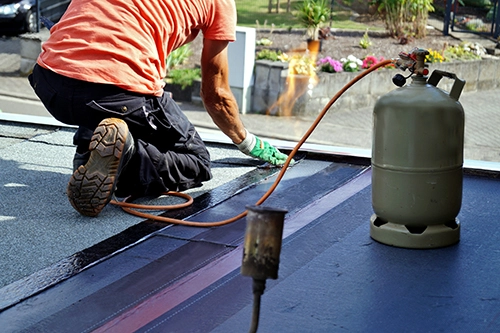- About Us
- Services
- Blog
- Contact
Need a quote?
Moss removal and roof cleaning are very important for keeping your house in the best possible condition, especially if you’re thinking of selling your property any time soon. All the same, it can be difficult to decide when your roof is really in need of a clean. Fortunately, there are a few general rules you can follow to help make your decision and that’s what we’re here to talk about today.




The first thing you’ll want to consider is the age of your property/when your roof was last renovated. Older roofing materials tend to be more prone to damage meaning that they require cleaning more often. New materials, on the other hand, are more sturdy so cleaning becomes less a matter of protecting your roof from damage and more of an aesthetic decision.
Put simply, for newer roofs, the best time to clean them is whenever you think they’re looking a bit dirty but for roofs that were put up more than two decades ago, you should probably think about having them properly cleaned at least once every five years if not more regularly.
Of course, it’s also worth noting that the seasons can have a major impact on when exactly you should have your roof cleaned. Like any outdoor work, moss removal and roof cleaning are best done during the spring and summer months.
This is because the days are at their longest allowing for longer working hours. By contrast, in the winter there’s a limited number of safe working hours, especially for work that has to be conducted high up. This is because the frost and the darkness can make for poor conditions. The upshot of this is that, during winter, such work often takes longer to complete.
Unfortunately, there’s a demand for winter work due to the increased likelihood of roof damage from poor weather conditions. As such, while not ideal, if it gets to Autumn and you have roofing work that still needs to be completed, then it’s better to deal with it sooner rather than later and avoid any risk of damage due to moss and debris throughout the winter.
Lastly, it’s important to find a reliable moss removal and roof cleaning company that’ll give you honest information about the current condition of your roof and when you might next need a clean. At Environ Roofing we’re always happy to answer your inquiries, helping to give you a clearer picture of your house’s maintenance needs.
If you’re looking for outstanding moss removal and roof cleaning services then please don’t hesitate to get in touch with us at Environ Roofing by calling 020 3971 1901 or emailing info@environroofingservices.co.uk.
It depends on the construction, but the minimum weight a flat roof must be capable of bearing is 300lbs. This refers to a concentrated weight where a load is positioned on just one area of the roof. So, for example, a commercial flat roof can approximately support a 300lb HVAC unit in a 2.5×2.5ft single space.
If you opt for a flat roof anywhere on your property, remember that it comes with a need for proper maintenance. Low-slope roofing London-wide should be checked every six months or so, or after spells of bad weather, to spot any signs of damage. No matter how small, these should be addressed before they escalate. Remove any debris (leaves, twigs and so on) regularly to avoid these blocking the gutters and allowing water to pool and stand on the roof.
If there are trees in the close vicinity, keep them cut back to reduce the amount of foliage that falls on your flat roof. And check internally for signs of moisture, dampness or water damage on a regular basis. Spotting problems early means resolving them will be cheaper in the long run.

Building a flat roof can be done in three ways. The simplest and most cost-effective choice for levelled roofing London-wide is to construct a warm roof where a roofing membrane is placed over the insulation that keeps the timber structure warm. Another option is to create a cold roof where insulation is positioned between the rafters under the ply roof covering. This is commonly applied to flat-roofed extensions.
The third method is the hybrid roof that contains diverse elements. Their designs require a gap of ventilation above a warm roof to prevent excess moisture within the roof structure.
If you’re looking for flat roofing local contractors, don’t just select the first firm you come across. Find a roofing company that’s been in business for a while and can demonstrate a good track record in installing, repairing, and replacing flat roofs specifically. Ask for recommendations from your own network or from a local trade association. If you need refurbishment work done to 50% or more of your roof, you’ll need a roofing contractor who can self-certify their work under the Competent Person Scheme. Otherwise, the Building Control department at your local authority will need to approve the job before it begins.
Ask whether they are covered by liability insurance and how long they’ll guarantee the work they will carry out. And never just opt for the cheapest quote unless you’re quite sure they’re the best company for the job. You can’t afford to compromise on your roof as the structural integrity of your property depends on it.
Ensuring your flat roof will comply with building regulations before installation can save property owners time, money and stress. First, the roof must have a slope of around 1:80, with water draining away to one or two roof edges. Waterproofing must be extended up to the adjacent walls with at least 150 mm from the surface of the roof.
Contractors must install ventilation in cold roofs. For warm roofs, the deck must be bonded with a VCL. The roof should have the capacity to withstand strong winds and be sturdy enough to take an individual’s weight. Finally, check whether planning permission is needed. Typically, this is only required if you live in a conservation area or a listed building, or are making significant changes to an existing roof.
If you’re looking for top roofing solutions at competitive rates, check out our range of roofing services at Environ Roofing Company London. To get started, call one of our representatives today!

